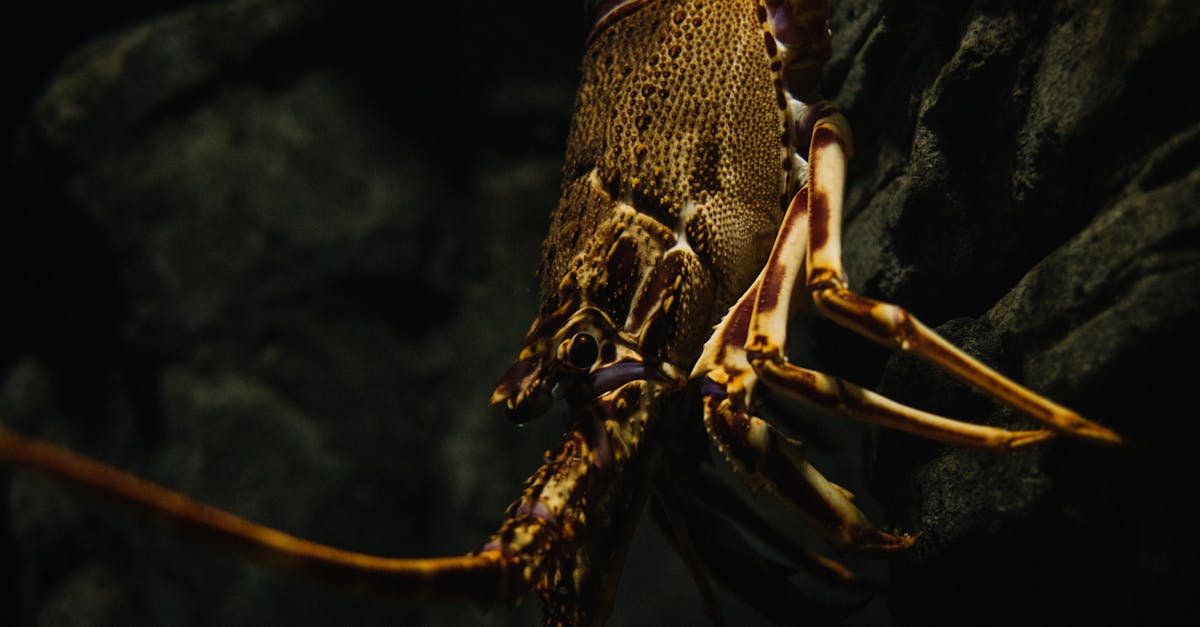
Why You Should Consider Buying Frozen Lobster Tails
Nutritional Benefits of Lobster
Lobster is a highly nutritious seafood option, offering a wealth of protein while being low in calories. A serving of lobster tail can provide significant amounts of omega-3 fatty acids, which are beneficial for heart health. The lean, succulent meat is also a source of essential amino acids, making it an excellent choice for those looking to maintain muscle mass or enhance their overall diet.
In addition to protein, lobster is rich in several vitamins and minerals. The shellfish contains vitamin B12, crucial for nerve function and red blood cell formation, along with significant amounts of zinc, which supports the immune system. Furthermore, lobster provides selenium, an antioxidant that helps protect cells from damage, contributing to overall health and wellness.
Essential Vitamins and Minerals
Lobster tails are a treasure trove of essential vitamins and minerals, contributing significantly to a balanced diet. They are particularly rich in B vitamins, including B12, which is vital for nerve function and the production of red blood cells. The presence of vitamin A supports vision and immune health, while vitamin E acts as an antioxidant, protecting cells from damage. Additionally, lobster contains important trace minerals such as zinc and selenium, which play crucial roles in immune function and thyroid health.
Incorporating lobster tails into one's diet can provide necessary nutrients that are often lacking in other protein sources. The high protein content supports muscle repair and growth, making it an excellent choice for those engaged in physical activities. Furthermore, the omega-3 fatty acids found in lobster contribute to heart health and reduce inflammation in the body. Overall, these nutritional components make frozen lobster tails a valuable addition to a healthy eating plan.
Availability Throughout the Year
Frozen lobster tails provide a convenient option for seafood lovers looking to enjoy this delicacy regardless of the season. Their availability means that you can indulge in high-quality lobster without being restricted by the irregularity of the fishing seasons. This ensures that you have access to the taste and texture of fresh lobster whenever cravings hit.
Moreover, the freezing process preserves the seafood’s natural flavour and nutritional value, allowing for year-round enjoyment. With frozen options, you can enjoy lobster tail dishes any time, whether it’s a casual family dinner or a special occasion. This flexibility makes it easier to incorporate lobster into various recipes and meal plans throughout the year.
Seasonal Accessibility of Fresh Lobster
Fresh lobster is largely dependent on specific fishing seasons, which vary by region. In many areas, lobster harvesting is regulated to protect populations during breeding periods. These limitations mean consumers may face challenges in finding fresh lobster year-round.
Frozen lobster tails provide a convenient alternative, ensuring availability regardless of the season. This accessibility allows seafood lovers to enjoy the delicacy without the worry of fluctuating market conditions or seasonal restrictions.
Sustainable Sourcing Practices
The seafood industry has made significant strides in promoting environmentally responsible practices. Many suppliers now adhere to strict regulations that govern fishing methods and quotas. These measures aim to protect lobster populations and preserve their habitats, ensuring that future generations can also enjoy this delicacy. Certifications from organisations such as the Marine Stewardship Council (MSC) indicate that the seafood has been sourced sustainably.
Consumers play a crucial role in supporting these initiatives. By choosing products with recognised sustainability labels, buyers can contribute to the conservation of marine ecosystems. Additionally, encouraging local fisheries that practice responsible harvesting helps to minimise environmental impact. This collective effort fosters a more sustainable food chain and promotes healthier aquatic environments for lobsters and other marine life.
Choosing Responsibly Harvested Products
When selecting lobster tails, prioritising products that come from sustainable fisheries is crucial. Look for certifications from reputable organisations that signify responsible harvesting practices. Such labels indicate that the lobsters were caught using methods that minimise environmental impact and ensure the long-term health of the lobster population. Choosing certified products supports fishing communities committed to sustainability.
In addition to certification, it is essential to consider the sourcing methods of suppliers. Opting for companies that engage in transparent practices can provide assurance of their commitment to responsible harvesting. Many reputable suppliers offer information about their sourcing, detailing where and how the lobsters were procured. This kind of transparency not only benefits consumers in making informed choices but also encourages a more sustainable seafood industry overall.
FAQS
Are frozen lobster tails as nutritious as fresh lobster?
Yes, frozen lobster tails retain their nutritional benefits, including essential vitamins and minerals, making them a healthy choice comparable to fresh lobster.
How can I tell if frozen lobster tails are of good quality?
Look for tails that are firm and have a bright colour. Avoid any that appear discoloured or have an off smell, as these could indicate spoilage.
Can I cook frozen lobster tails directly from the freezer?
Yes, you can cook frozen lobster tails directly from the freezer. However, for best results, it's recommended to thaw them first in the refrigerator or under cold running water before cooking.
What are the sustainability practices to consider when buying frozen lobster tails?
Look for certifications from recognised organisations that indicate responsible harvesting practices, such as the Marine Stewardship Council (MSC), which ensures the lobster is sourced sustainably.
How can I incorporate frozen lobster tails into my meals?
Frozen lobster tails can be grilled, baked, broiled, or used in pasta dishes, soups, and salads. They are versatile and can complement a variety of flavours and cuisines.
Related Links
Why Quality Matters When Buying Lobster TailsWhat to Consider When Buying Lobster Tails
Roundup of the Best Places to Buy Lobster Tails Online
Review of Top Retailers for Buying Lobster Tails
10 Tips for Buying the Best Lobster Tails
The Historical Significance of Lobster Tails in Cuisine
What to Look for When Buying Fresh Lobster Tails